Research shows that community gardens provide more than just silverbeet and beans – they promote a sense of engagement and belonging in a community.
And it turns out that a good composting scheme will also attract people from the surrounding suburbs who are keen to recycle their food scraps.
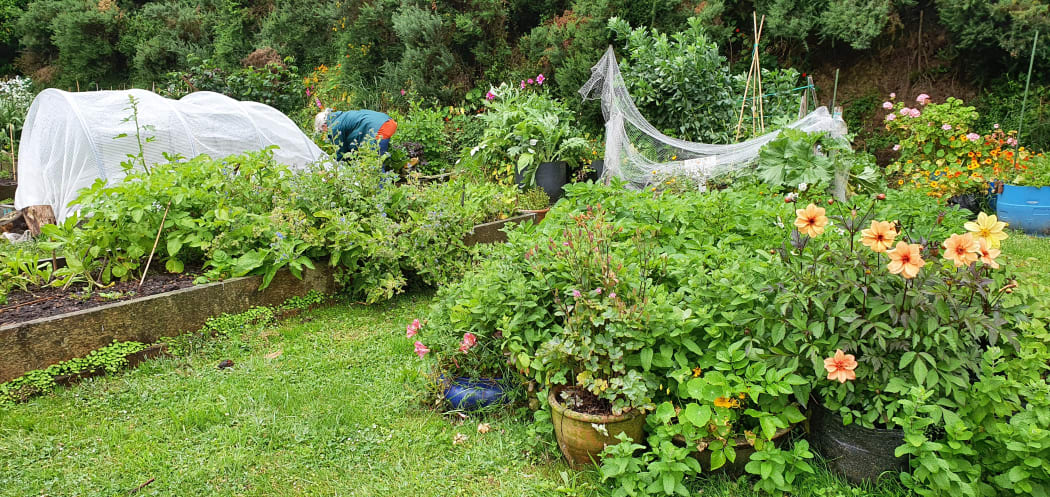
Chris Montgomery working in a vegetable bed at Innermost Gardens. Photo: RNZ / Alison Ballance
Subscribe to Our Changing World for free on Apple Podcasts, Spotify, Stitcher, iHeartRADIO, Google Podcasts, RadioPublic or wherever you listen to your podcasts
Wellington’s Innermost Gardens is a large, successful community garden located next to the town belt on Mount Victoria.
It was created on the site of an old bowling green and marching lawn, using permaculture principles and raised beds.

Innermost Gardens beds are home to a range of vegetables, and when crops are ready locals are encouraged to pick enough for a meal. Photo: RNZ / Alison Ballance
Innermost Gardens runs regular working bees and is supported by a large number of volunteers coordinated by a core group.
It has been the subject of a recent Victoria University of Wellington summer student research project, which has helped quantify its social and environmental benefits.
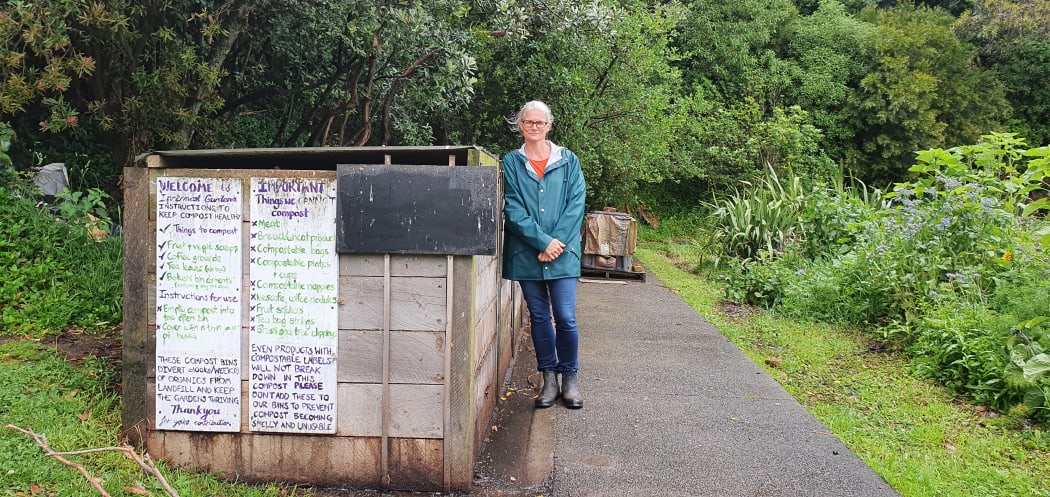
Volunteer and 'compost queen' Chris Montgomery stands next to the compost bins at Wellington's Innermost Gardens, which are popular with locals wanting to recycle food scraps. Photo: RNZ / Alison Ballance
Core group member Chris Montgomery says they requested the research because “we know that we’re doing better for this land than if it was a marching lawn, but how do you put a dollar value on that?”
“[Wellington City Council] know that we’re here,” says Chris, “yet on their balance sheet we’re just a certain amount of income from renting the hall.”
“We wanted to be able to say that while you may see us as a one line item on your balance sheet, actually we bring a whole lot more benefit to the community by just being here and doing what we do.”
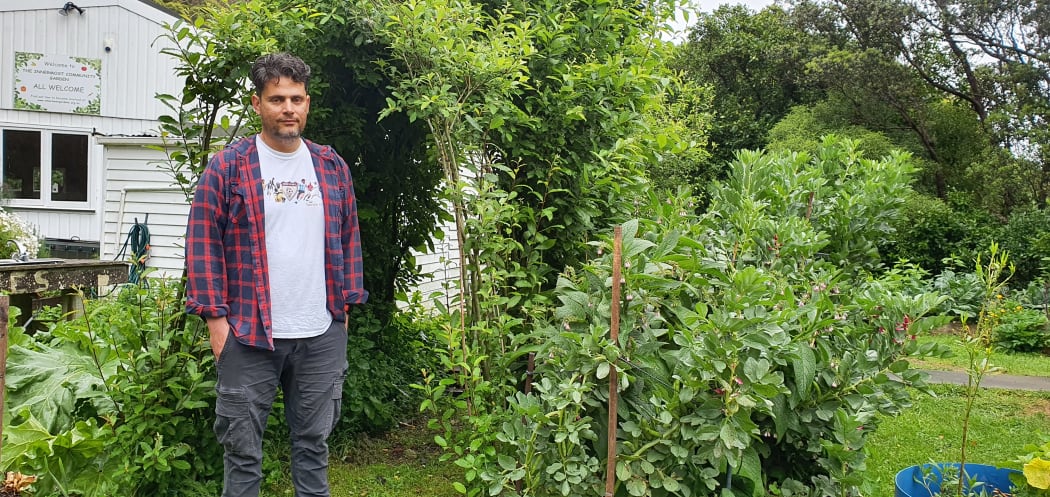
Victoria University of Wellington's Fabricio Chicca says community gardens offer many social benefits. Photo: RNZ / Alison Ballance
Architect Fabricio Chicca, from Victoria University of Wellington’s Faculty of Architecture and Design Innovation, has a long-standing interest in urban agriculture and community gardens and he has supervised the summer research.
The first project, he says was carried out a few years ago for Wellington City Council. The council were interested in knowing how many community gardens there were in the city and how successful and productive they were.
The survey identified 21 gardens, which varied greatly in size and effectiveness.
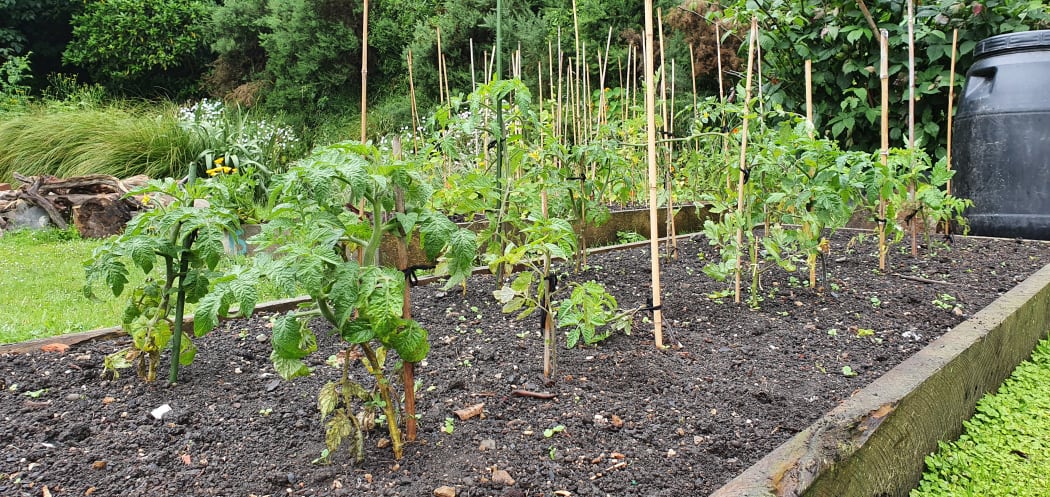
A bed of tomatoes at Innermost Gardens. Photo: RNZ / Alison Ballance
Fabricio says that the greatest benefits offered by community gardens are social ones, rather than sustainable environmental ones.
Community gardens are, he says, not the most productive use of land but are appreciated for other reasons.
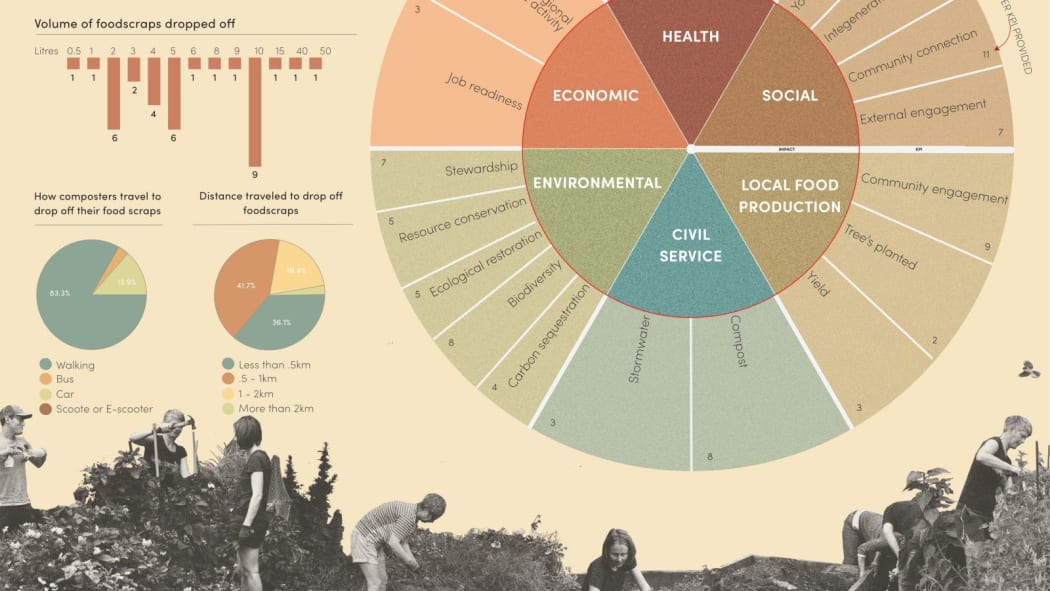
Victoria University of Wellington student Bliss Graetz won a best poster competition for her work showing her research into volunteers and locals using Innermmost Gardens. Photo: Bliss Graetz / VUW
The most recent Victoria University of Wellington summer student was Bliss Graetz, a landscape architecture student.
She wanted to find the best ways to measure and communicate the impacts of community gardens, and she spent a lot of time at the gardens interviewing people.
The garden’s compost system is particularly popular with locals. Bliss found that most people travelled less than a kilometre to drop off food scraps.
Her surveys of garden users showed that climate change was a key motivation for composting and that about three quarters of people walked to the gardens, with most of the rest driving their car.
Fabricio says that Bliss’s work supports other research showing that 800-1000 metres is a sweet spot when it comes to how far people will travel to reach a communal compost system.
He says this is something that councils should factor in when designing urban composting schemes.
Fabricio adds that a successful compost scheme takes work. In the Innermmost Gardens case, Chris has become something of a ‘compost queen’, visiting every few days to add dry matter to the food scraps and ensure that bins are used in rotation as they fill up.
Listen to the full podcast to hear more about Innermost Gardens and the Victoria University of Wellington research.


